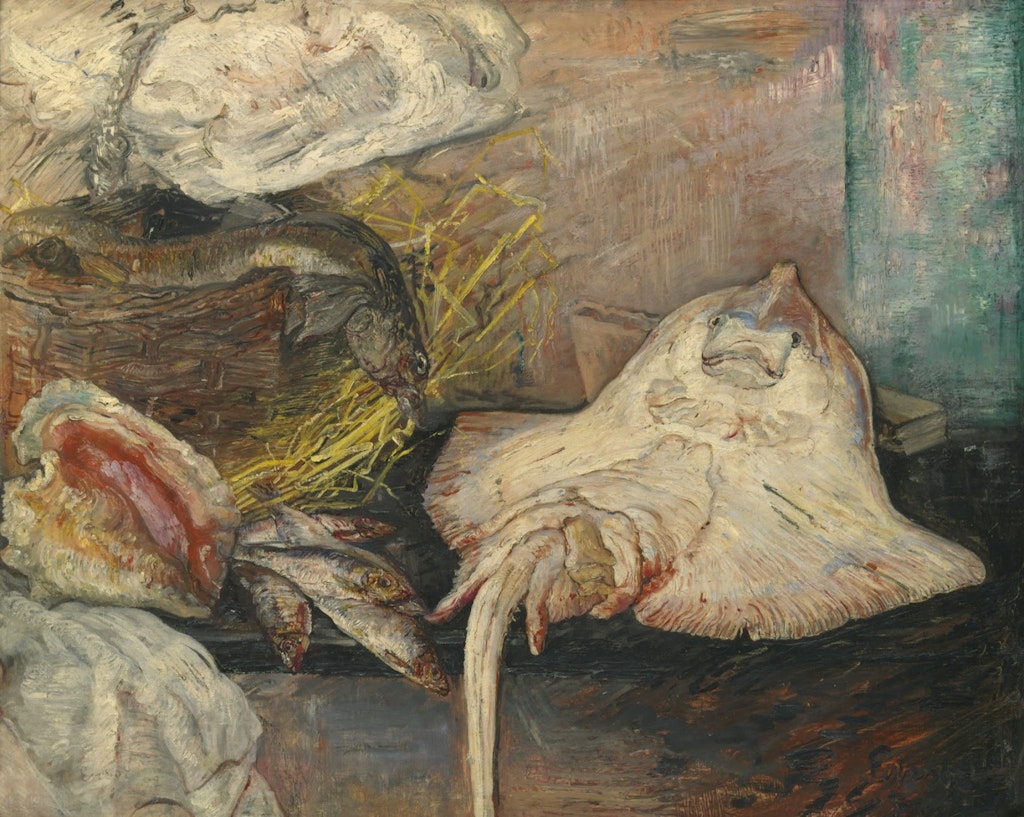This article is taken from the May 2024 issue of The Critic. To get the full magazine why not subscribe? Right now we’re offering five issues for just £10.
Sometime around 1909, the Romanian sculptor Constantin Brâncuși was approached by “a lady from Paris, a princess” with a commission to carve her portrait. Brâncuși, a leading Modernist, had a “miserably low opinion” of traditional sculpture, even describing Michelangelo’s work as “nothing but muscle, beefsteak … beefsteak run amok” — “bifteck” with its similarity to a slab of clay being a favoured term of abuse.
The lady, however, was persistent. During a meal together he noted that whilst “She had a beautiful bust” she also had “ugly legs and was terribly vain … She was looking in the mirror all the time, even during lunch … discreetly placing the mirror on the table, looking furtive”.
Nevertheless, something in her narcissism tickled him, and he turned this “vain and sensual” woman into a work called Woman Looking Into a Mirror, a stylised curve of stone.

The lady was Princess Marie Bonaparte, great-grandniece of Napoleon I, who at her marriage became Princess George of Greece and Denmark, and later the Duke of Edinburgh’s aunt. She was both Croesus-rich and intellectually curious.
She was a friend and adherent of Sigmund Freud, published several works on psychoanalysis and helped her mentor escape Nazi-occupied Vienna (and as many as 200 other Jews too). The princess was, however, best known for her sexual research.
Her interest seemed to have been stirred by her inability to achieve orgasm through penetrative sex. Despite her own willingness and the attentions of numerous lovers — including her husband and his uncle (who were themselves entwined in a long and emotional affair) and the French prime minister Aristide Briand — she declared herself “frigid”.
In 1924, after studying the genitalia of 200 women, she published Considerations on Anatomical Causes of Female Frigidity under the pseudonym A.E. Narjani, in which she concluded that the female orgasm was linked to the distance between the vagina and the clitoris. She had two surgical operations to realign hers. Both failed.
This was the woman behind Woman Looking Into a Mirror. Brâncuși, however, was unhappy with the piece and destroyed it, but he used it as the basis for a more radical work. He simplified and exaggerated its essential elements — the oval head, the curve of neck and back, the bulbous bust — and removed all superfluous detail. Eyes, nose and hands went, the voluminous and decorative hairstyle was reduced to a squiggle of incised lines. A woman was now just a series of swelling shapes.
Brâncuși made versions in marble and polished bronze and the piece, Princess X, was exhibited at the Society of Independent Artists in New York in 1916 where it sparked interest but nothing like as much as Marcel Duchamp’s urinal, Fountain.
In 1920, he showed the work in France for the first time, at the Salon des Indépendants — the exhibiting forum for avant-gardists who couldn’t or wouldn’t show in the official Salon. This time, a furore erupted.
Accounts vary, but it was either Picasso or Matisse who tracked it down and commented: “Here it is: the phallus!” They merely confirmed what many visitors already thought. The police were called, the sculptor was made to remove the piece ahead of a visit from the Prime Minister (“You could not march the Minister past a pair of balls,” as one of the organisers put it), and Princess X became a succès de scandale.
Brâncuși was outraged. The fault lay in the dirty minds of the viewers since this was not a two-feet tall, highly polished membrum virilis, he said, but a representation of “all women rolled into one, Goethe’s Eternal Feminine reduced to its essence”.

He had spent five years on the piece in order to make “the material speak out and state the inexpressible”. Working himself up into poetic flights, he asked: “What exactly is a woman? Buttons and bows, with a smile on her lips and paint on her cheeks … That’s not woman.” He had managed, by sheer effort, to transcend “the material”, adding that “digging out little holes for hair, eyes, ears” would spoil it.
Marie Bonaparte was just one of the women he reduced to essential, biomorphic forms — Nancy Cunard, Baroness Renée-Irana Frachon and Eileen Lane were all reimagined as curved tubes, egg shapes and dollops.
“Am I beautiful?” wrote a hopeful Mme Eugene Meyer to the artist, desperate to see what he had made of her, little suspecting that he envisaged her as a smooth and polished tripartite marble totem.
The sculptor himself was not a very helpful guide to interpreting his own works: “Look at my sculptures until you see them,” he said. What he was clear about was that realism did not lie in observable details: “A nose doesn’t make you.” What underlay Brâncuși’s art was his belief that “What is real is not the external form, but the essence of things”.
So was the essence of Marie Bonaparte sexual? He later admitted the possibility: Princess X was never intended as the embodiment of her “hidden desires”, he said, though just perhaps this conflation “happened unconsciously”.
Brâncuși, the subject of two major exhibitions this year, should perhaps have returned to his model for an insight into his own motivations. After all, when she once encountered a flasher in Paris, she let him do his stuff. Then the psychoanalyst in her took over, inviting him in her most reassuring tones to “Sit next to me and tell everything!”
Enjoying The Critic online? It's even better in print
Try five issues of Britain’s newest magazine for £10
Subscribe



